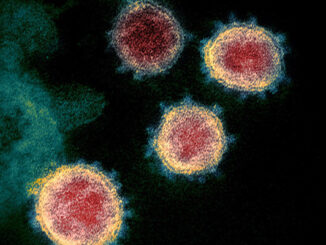
Company Background
An overview of Sharp Corporation and the history of its Plasmacluster Ion technology are instructive in understanding the extent that this company believes that its very own futuristic state-of-the-art technology surpasses anything in the air purification market.
Sharp Corporation was founded in 1912 in Japan. It listed on the Osaka Stock Exchange in 1949. Sharp’s business presence in North America has had a long history, with the setting up of its first overseas sales base in the US in 1962. Sharp Canada started up in 1974.
The company is well-known for innovative products spanning audio-visual products, home appliances, information and communication products, solar cells and LCDs. Its business philosophy includes a dedication to “unique, innovative technology to contribute to the culture, benefits and welfare of people throughout the world”.
With growing global awareness about healthy lifestyles, environmental care and energy conservation, Sharp has declared that it will contribute to the world through an environmental and health-conscious business as one of its visions. Plasmacluster Ion technology is at the core of this social vision.
Chronological History of Plasmacluster Ion Technology
On 19 February 2001, Sharp announced that it had developed the world’s first Plasmacluster Ion air purification technology, described as airborne ions surrounding germs and odors.
Interestingly, the first product to use this technology was launched earlier in 2000. An air purifier (FU-L40X), it was described as using Plasmacluster Ion technology that releases inactivating positive and negative ions into the air to surround and inactivate mold fungi.
On 3 September 2003, Sharp declared that it had proof for the first time ever that Plasmacluster Ions deactivate airborne mite allergens, a main cause of asthma and atopic disorders.
On 27 July 2004, Sharp announced that Plasmacluster Ions inactivate airborne corona virus – A World First.
On 17 November 2004, Sharp explained the mechanism for inactivating bacteria by Plasmacluster Ions.
A dramatic but seemingly unnoticed claim was made by Sharp on 6 June 2005 that Plasmacluster Ions had been proven effective against airborne highly pathogenic H5N1 avian influenza.
On 21 November 2005, sales of Sharp products equipped with Plasmacluster Ion technology reached 10 million units worldwide.
On 10 August 2006, Sharp introduced humidifying features into air purifiers. This amplified the effectiveness of Plasmacluster Ions.
Stepping up the ante, on 3 August 2007, Sharp proved the effectiveness of Plasmacluster Ions in eliminating serratia bacteria in collaboration with Dr. Melvin First, Professor Emeritus, Harvard School of Public Health.
Another dramatic announcement by Sharp on 27 August 2008 was headlined Higher Concentrations of Plasmacluster Ions Boost Virus Inactivation and Elimination, Inhibit 99.9% of Airborne H5N1 Avian Influenza (‘Bird Flu’) Virus. The verification was in collaboration with Retroscreen Virology Ltd, a UK company associated with virology Professor John S. Oxford, University of London.
Though announced in the midst of the multi-year bird flu pandemic scare, the world did not seem impressed with Sharp’s claim. This, we believe, was primarily due to the lack of independent scientific peer reviews. We validated this belief by suggesting Sharp Plasmacluster Ion technology at several bird flu forums and met with this precise rebuttal.
On 19 January 2009, Sharp announced plans to install 10,000 Plasmacluster Ion generators at its offices globally to combat a pandemic of new viruses. These ion generators produce 25,000 ions per cubic cm and catered to room sizes of 23 square m and 50 square m. The aim is to deactivate harmful airborne substances in all Sharp offices, thereby ensuring the safety of employees and to keep the company business running smoothly.
Rare Revelation of Marketing Strategy
On 16 January 2009, Sharp announced that sales of products equipped with Plasmacluster Ion technology had reached 20 million units in 58 countries around the world.
But what is worthy of greater attention was that in this same announcement, Sharp revealed their phased marketing strategy of Plasmacluster Ion technology. The concept of strategic phases was explained. Phase I focused on R&D of the technology. Phase II centered on efficacy of the technology and Phase III will zero in on efficiency. Coincidentally, these phases are part of our 5 Key Factors Air Purifier Review Model. At the core of their marketing strategy is the concept of academic marketing, the reliance on academia to back up their technological claims.
Fawning Accolades Roll?
This review is not a fawning accolades roll – it is a peek into Japanese methodology in achieving leadership and domination in whatever they set their minds to. That they may have invested more money than any other player in the ionic air purifier industry may be an understatement!
The above chain of events from the year 2000 reflects the absolute confidence of Sharp in the integrity of the Plasmacluster Ion technology. After almost a decade in the market, there is no known legal action taken against Sharp for harm arising from using Plasmacluster Ion technology.
That this is a multi-billion business may not be an exaggeration too. A Sharp air purifier costs about US$500. They have crossed the 20 million mark for various units sold with the technology. Using just US$250 per unit as a rough gauge, we are talking about a US$2.5 billion business that is growing everyday.
Do not be surprised that the Sharp Plasmacluster Ion technology becomes the de facto standard of air purification. All that is lacking is an independent scientific peer review. I expect someone will choose this very technology to be the debutante peer review for the ionic air purifier industry.
What Next?
You will note that to date, Sharp’s approach has been to focus on efficacy (Phase II). They are now moving on to effectiveness (Phase III).
Proudly WWW.PONIREVO.COM
Source by Min En



